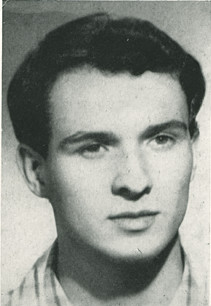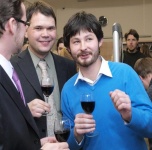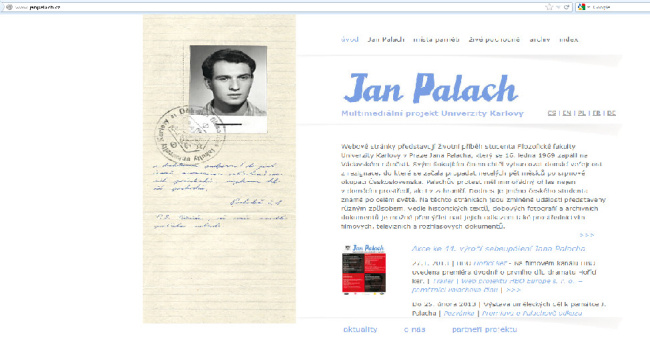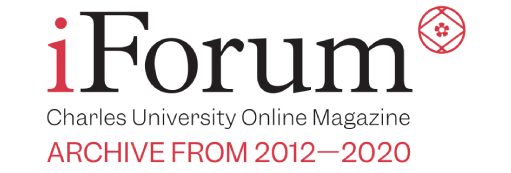Silvie Mitlenerová (FF UK) • 13 March 2013
Self-immolation is for today’s media less attractive than hanging twenty plushy hangmans on bridges over Vltava
Michal Ježek, one of chief managers, was interviewed about a memorial to the anniversary of Jan Palach’s self-immolation.
What is the relationship between Jan Palach and Charles University?

Jan PalachJan Palach studied at Faculty of Arts at the time of his deed. He studied here for about four months, and before, he had studied for two years at the University of Economics – the school, however, has not taken care of his legacy. Sincerely, I don’t know why. Both Faculty of Arts and Charles University see him as their symbol; they contribute to all projects related to Jan Palach and his legacy. We know that Jan Palach did not originally want to study at University of Economics but was not accepted by Faculty of Arts due to a great number of applicants.
The letter of acceptance was delivered to him on 17th August 1968 when he came back to Czechoslovakia from USSR; there he had been on a workcamp in Kazakhstan.
Do you think Jan Palach was a hero?
I use the word “personality” rather than hero. The hero presupposes a mature person, but Jan Palach could not in his twenties be a completely mature man. However, he certainly was very sensitive and intelligent.
Has the fame, the popularity of Jan Palach been changing in last 45 years? What about the public attitudes to him?
The immediate reaction of Czechoslovak society is very well illustrated by the pictures from endless funeral marches flowing through Prague. The march began in Karolinum where the coffin was displayed; then, people went ahead over the Old Town Square to Faculty of Arts.
I do like the song of Bohdan Mikolášek composed at that time: “silent is streaming down the street”, he sings. A short time ago I have been talking to people who had been with Palach in Kazakhstan and then went to say him goodbye at his coffin… they say, if a pin fell down in the march, everyone would hear it.
A year later, public events became very sporadic. Censorship was deleting Palach’s legacy from the memory of the society, and people were afraid of punishment. Nevertheless, foreign newspapers were writing about Palach, and groups of Czech emigrants made efforts to commemorate his legacy with both public and private events.

From left: Dean of the Faculty of Arts doc. PhDr. Michal Stehlík, Ph.D., Patrik Eichler and Michal JežekCzechoslovak society woke up at 20th anniversary of Palach’s deed. On Sunday 15th January 1989, some anti-regime groups (České děti, Charta 77, Mírový klub Johna Lennona, Nezávislé mírové sdružení a Společenství přátel USA – Czech Children, Charta 77, John Lennon’s Peace Club, Independent Peace Association and Society of Friends of the USA) organized a commemorative meeting at the statue of Saint Wenceslas in the centre of Prague. After a long time it was a remarkable social manifestation inspired by Palach, and it broke out into demonstrations and other social protests ending up in Velvet Revolution. One can see what a big role symbols play for us.
You have already devoted a few years of intensive work to Jan Palach’s legacy. Why did you choose him?
It is important for a society to know examples of people from its modern history which were brave and very sensitive to what was happening around them. Examples of people who were able to stress what was going on here and now, to stress it very boldly and with a great self-denial. Almost everyone forgets the fact that Jan Palach left a letter with specific political requirements: ban on spreading the propaganda newsletter Zprávy (News) that was delivered obligatorily to everyone; prohibition on censorship; appeal to a general strike for which there were conditions after his deed. At the same time he behaved sensibly; he chose the place of his deed in order to make the greatest possible number of people see him.
Who were behind the idea of the website about Jan Palach? What was their motivation?
If I remember correctly, three years ago, after organizing the events to remember the self-immolation and death of Jan Palach we told each other: all right, good job, but it would be fine to do something more persistent as long as memory of a society is, by nature, leaky.
There was a large monography Jan Palach ’69 and an exhibition of the same name. The website about Jan Palach is a natural follow-up and culmination of such work.

www.janpalach.eu/
What is the main purpose of the website? Are you going to build and advertise it actively?
The website focuses on the most general audience; that is why it was translated into different languages – English, German, Polish and other. For example, a Russian version is planned for 45th anniversary as students of translatology showed an interest in the task.
One big section of the website contains stories of Palach’s followers. Only Jan Zajíc is more known although in Czech Republic it was also Evžen Plocek, and numerous examples of politically motivated self-immolations are known from abroad. Recently we have been interested in cases of self-immolations from the last time because their motivations are rather unknown; usually there is nothing more than a short notice in Czech Press Agency. The majority of cases are probably based on personal psychical problems; these have to be analyzed yet.
I do not consider self-immolation a good idea nowadays. It does not interest the public for the society is overloaded with shocking news – moreover, I think the deed cannot be repeated because it reacted on a specific political situation.
Are you going to work further on? Are there some new projects concerning Jan Palach planned?
Yes, we are. We would like to translate the website into Russian and maybe even Chinese. We also think about other historical texts, namely about an archive of contemporary witnesses – we have received valuable memories from a number of personal observers.
We have another idea of quite a huge project. To 50th anniversary of Palach’s self-immolation we would like to open a museum of Jan Palach in the house of his family in Všetaty. But this is still rather in the air.
At the Faculty of Arts a historical event happened: the world premiere of the document about Jan Palach and his family Burning Bush (Hořící keř). How would you explain the fact that it was shot by a famous Polish director Agnieszka Holland and not by one of well-known Czech directors?
Agnieszka Holland belongs to the world top class of directors. In 1960s she studied in Prague; therefore, she has a strong relationship to both the topic and the environment. Documents about Jan Palach have already been produced by Czech directors as well but this is the first drama (or more precisely, mini-series); moreover, it is exceptionally well-written and shot.
During the presidential election we experienced rising of political activity in public, and not only among students. Is it possible that today’s activists are also inspired by Jan Palach’s legacy?
Let’s differentiate two things. First: the particular social and political conditions which Jan Palach reacted to. We find ourselves in conditions fundamentally different, and the presidential elections also have absolutely different meaning for the society than the 1968 invasion did. You could work with that assumption, but only very vaguely, and Palach’s legacy would be in a certain manner exploited. In fact it can be used as a parallel for anything of your choice.
Many people project their problems and frustrations into Jan Palach; many people exploit him for politics; and many people do not understand him because they lack proper information. The question what Jan Palach would say about, for example, the movement “Vote for Karel!” is quite absurd.
